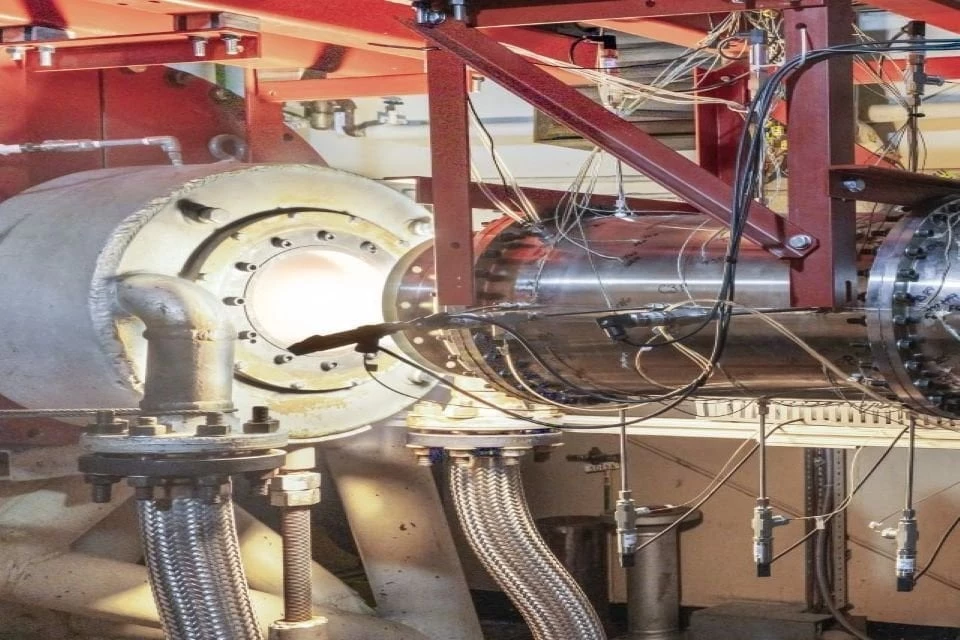Britain's Ministry of Defence, with the help of the United States, has achieved what is being billed as a major hypersonic propulsion test of a new engine design that could power a cutting-edge hypersonic cruise missile for UK armed forces by 2030.
With their ability to fly at speeds in excess of five times the speed of sound, hypersonic missiles have the potential to revolutionize warfare in a way not seen since the sound barrier was cracked in 1947. By being able to fly at ultra-high speed and maneuver as well, such missiles would be extremely difficult to detect as they blur past conventional air defenses to strike their targets so hard that they can destroy them by sheer momentum.
The tricky bit about hypersonic missiles is getting them up to velocities above Mach 5 and keeping them there in a practical way. For example, the way that most hypersonic test vehicles operate is that they're shot to supersonic speeds by a rocket motor and boosted to high altitude. Then, as they glide down they accelerate to hypersonic speed. It works, but that isn't very practical for a weapon.

What's wanted if you're building a hypersonic cruise missile is an air-breathing engine that can continually power the vehicle along. This gives it a much greater range than a rocket or hypersonic glide missile, as well as the ability to fly at much lower altitudes where it would be much more difficult to intercept.
Of course, building such an engine is a staggering challenge. Or rather, it's a series of challenges. His Majesty's Government hasn't released much in the way of technical details about the new engine – no doubt much of it is highly classified. However, we can make deductions based upon the state of the art and the flight target of 2030, and from the fact that the new engine is supposed to work along the entire velocity spectrum from supersonic to high hypersonic.
One obvious problem is that an air-breathing engine cannot handle air coming in at Mach 5+. This would cause tremendous pressure, compression, and shockwave problems that would burst the engine the second it tried to power up. Therefore, the engine needs some sort of variable-geometry inlet, like an air spike, that can be adjusted in real-time to mold the shockwave and reduce the speed of the incoming air from hypersonic to supersonic or subsonic.
Even then, a hypersonic engine needs to operate at temperatures in the neighborhood of over 2,000 °C (3,632 °F). Even titanium alloys melt in that kind of heat. As a result, the new design has to have some way of handling the heat, including some sort of pre-cooling system, ultra-high temperature ceramics (UHTCs) or ceramic matrix composites (CMCs) to build components or as heat-shield coatings.
Worse than melting, all these materials need to be able to handle high degrees of both mechanical and thermal stress, and resist oxidation due to high temperatures. Then there's the fact that all this has to be able to fit in a very small space and it has to work with a rocket booster or a supersonic mothership to get it up to minimum speed. All that means sophisticated control systems, advanced fuel management, and the use of modular, scalable components made out of composite materials for non-critical sections to save weight.
According to the MoD, the new engine has gone through 233 static test runs in a hypersonic wind tunnel as part of its Team Hypersonics (UK) program. Led by a joint team from the Defence Science and Technology Laboratory (Dstl) together with the US Air Force Research Laboratory (AFRL) and industry partners, these tests were conducted at the NASA Langley Research Centre in Virginia over a six-week period.
The tests involved several variants of the new design and demonstrated both its performance and robustness. The data recorded will be used to build more advanced upgrades.
"We are living in a more dangerous world and it has never been more important for us to innovate and stay ahead of our adversaries, equipping our forces with the technologies of the future," said Defence Secretary, John Healey MP. "This milestone moment on hypersonics research, supported by British scientists and British small businesses, demonstrates another crucial area where we are working in lockstep with the United States to bolster our Armed Forces and strengthen our deterrence."
Source: Ministry of Defence





